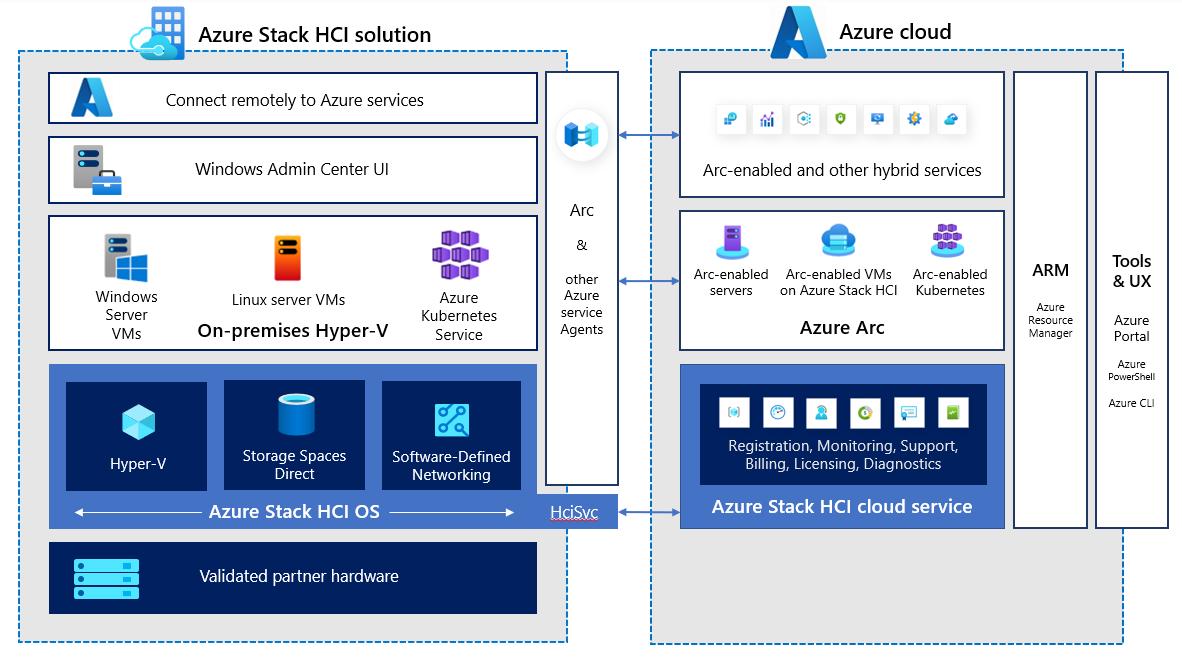
Présentation of Azure Stack HCI
What is Azure Stack HCI?
Azure Stack HCI is a hyper-converged server solution designed to enable businesses to manage their IT infrastructure more efficiently and flexibly. A « hyper-converged » server is a system in which traditional hardware components, such as servers, storage and networking, are combined in a single box. In short, Azure Stack HCI is an operating system that miniaturises the Azure Cloud and makes it available on your local infrastructure.
Services in Azure Stack HCI
Azure Stack HCI offers a variety of services and features, including:
- Advanced virtualisation: Thanks to Hyper-V, Microsoft’s virtualisation solution, you can run multiple virtual machines on a single server, offering great flexibility for deploying and managing your applications.
- Software-defined storage: Azure Stack HCI offers software-defined storage, which allows you to manage storage more efficiently and flexibly. You can also use local hard disks, SSDs and external storage devices.
- Centralised management: You can manage your Azure Stack HCI infrastructure from the Azure portal, making it easier to manage, monitor and maintain your hyper-converged servers.
- High availability: Azure Stack HCI is designed to guarantee high availability of your applications thanks to built-in replication and redundancy.
- Advanced security: You can take advantage of Microsoft’s advanced security features to protect your data and applications.

Benefits of Azure Stack HCI
Azure Stack HCI offers a number of advantages:
- Scalability: You can add new hardware resources as your business grows, without disrupting existing operations.
- Flexibility: You have control over computing, storage and network resources, enabling you to customise your infrastructure to meet the specific needs of your business.
- Lower costs: By consolidating your hardware resources and using defined software, you can reduce infrastructure costs and improve profitability.
- Integration with Azure: You can extend your local infrastructure into the cloud using Azure services, offering greater flexibility for hybrid workloads.
Azure Stack HCI prices
The cost of Azure Stack HCI varies according to several factors, including storage capacity, computing power and your company’s virtualisation needs. You’ll need to factor in the cost of software licences, hardware, and support and maintenance services. Microsoft offers a variety of licensing options, including pay-per-use models to meet different budgetary needs.
Conclusion
In conclusion, Azure Stack HCI is a powerful, flexible and scalable hyper-converged server solution that offers many advantages for businesses looking to optimise their IT infrastructure.
The principle is simple: get the Azure Cloud and put it locally on your infrastructure.
In a future article, we’ll look at how Azure interacts with an Azure Stack HCI infrastructure.

